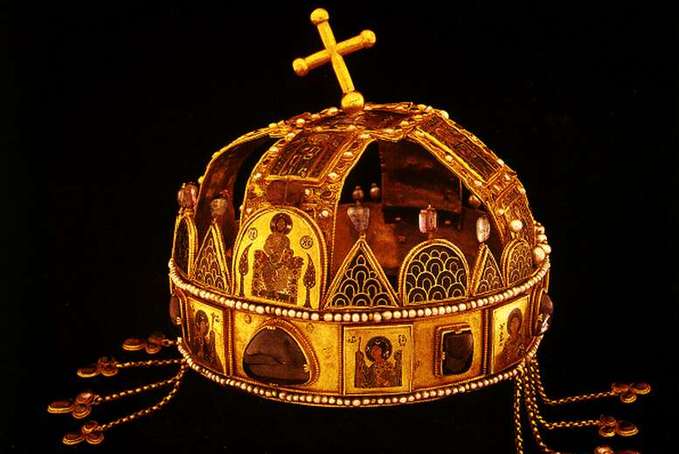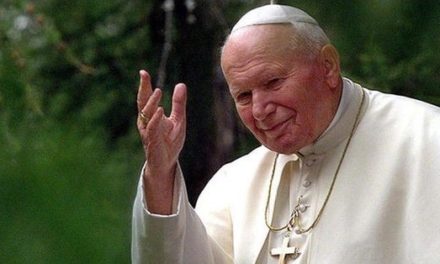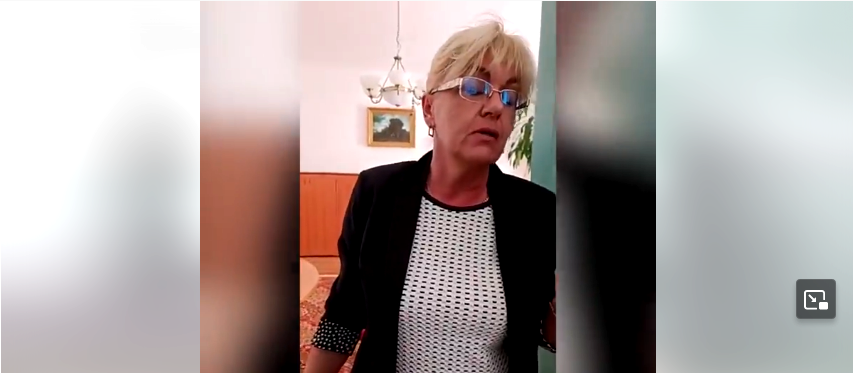In another letter of August 26, 1966, to President Johnson, Cardinal Mindszenty also touched upon the fate of the coronation mantle kept in the United States of America, so that it does not become the prey of the masses.
He felt this was so important that he wrote it down in his daily notes three days later. "I sent the letter to the president: thanks to the Holy Crown, St. for saving the mantle. I request a review of the coronation robes.”
Cardinal Mindszenty to President Johnson on August 26, 1966 regarding the matter of the Holy Crown
"For twenty-one years, I have been concerned about the sacred treasures of Hungary, Saint Stephen , the coronation mantle, etc. my fate, whether I be in Esztergom, in the prison of the communists or in the shelter of the American embassy. My initial fear is that they will perish if the system acquires them. Perhaps they will be taken apart and sold for some financial gain. Either they will be distributed among the successor states of the thousand-year-old Hungarian nation, or they will be confiscated by the Soviet Union to be exhibited in the Hermitage, or perhaps they will be turned into money to alleviate the chronic grain shortage.
Your agent, Mr. O'Shaughnessy, has assured me that not only the Holy Crown, but also the Coronation Robe is in the hands of the United States for the Hungarian people, in a perfectly safe place. This information almost allayed my fears.
Thank God that the generous care and attention of the Presidents of the United States to sacred and historical treasures thwarted the Communists' intentions to the contrary. The United States will not release them to neighboring states or the Kremlin.
Still, I still have a small concern about the coronation robes. Despite the apparently careful storage, works of great importance fell victim to the ravages of time over the years. I respectfully request, Mr. President, that the cloak and its storage location be examined by, say, a museum curator who knows about delicate, old textiles, to make sure, for example, that there are no stains or dirt on it, or that there is no Is it advisable to store it elsewhere or differently? I am not asking this because I doubt the care of the mantle's custodians, but simply because of my deep concern for the thousand-year-old textile.
These treasures will therefore be preserved for their rightful owner, the Hungarian people. However, the people were not saved. Encouraged by your noble care for our coronation badges, I ask you to try to rescue their owners as well.”
In his letter, he even touched on the fact that "in the history of the United States, the Polish Koscius[z]ko and Pułaski , as well as the Hungarian colonels Kováts and Teller, played a glorious role. For these merits, the United States of America, now a great power, should reciprocate in accordance with its great principles. For centuries, the Holy Right, the crown and the coronation robes were together in Buda Castle. The thousand-year-old nation organized an annual procession on August 20 in the capital. We ask God and the President for this opportunity again.
By aligning the names of the people who participated in the American freedom struggle with the names of the contemporary nuclear scientist, the "father of the hydrogen bomb", the cardinal wanted - who knows how many times - to repeatedly, but unsuccessfully, put pressure on overseas politicians to pursue a more active policy for the "slave nations". among them for the better future of Hungary. On November 2, the tenth anniversary of the revolution and freedom struggle, in another letter to the president, he repeated his thanks "in connection with the Holy Crown and the coronation mantle. I received a reassuring answer in both cases. That's a big deal, I appreciate it.”
Cardinal Mindszenty - from November 28, 1966, from the shelter of the embassy - wrote four letters to the president in 1967, among them the one written on May 17, 1967 (in which he subjected Romania's politics to scrutiny and harsh condemnation) also dealt with the Holy Crown. "With your permission, I must add the following to my letters of August 26 and November 2, 1966.
I expressed my deep gratitude for the delivery of the Hungarian Holy Crown and the coronation mantle." In addition to his thanks for the safekeeping of the coronation jewels, the cardinal also reiterated the need to "save its owner, Hungary, and the 172 million inhabitants of Central Europe. They represent the most civilized and historic part of the 30 captive nations celebrated annually in the United States of America.”
Martin Joseph Anthony Hillenbrand 's mood report dated October 24, 1967 from Budapest states that the cardinal is concerned with the October 18 issue of Die Presse, according to which the Hungarian government's conditions in exchange for his departure include the return of Saint Stephen's crown. Mindszenty said that under such conditions he would never leave Hungary, because he could not agree to the return of the crown. At the embassy, they told the cardinal that the suggestion of the Vienna paper was only a hypothesis, and that they had no information that this question had been raised. The cardinal opposed the return of the crown at that time because he could not wish for the government in power to take it over.
in his telegram of October 27, 1967, written to Cardinal Franz König , who was visiting him I wouldn't want to appear in such a light, not even for a short time. […] If there are no restrictions and changes in the governance of my archdiocese, if there is no need to contradict the Holy Crown and its duty[m], with full consideration of all components and circumstances, I would go to the nearest part of the foreign country. Then, with obedience, I would visit His Holiness and accept his paternal wishes.”
During his eighth visit to Mindszenty on October 17, 1967, Cardinal König realized that the Hungarian cardinal did not want to leave the embassy before the outcome of the Hungarian-Vatican negotiations. They even discussed the next morning. Cardinal Mindszenty König also took his letter written that day to the Vatican VI. to Pope Paul . Amleto Cardinal Giovanni Cicognani , Secretary of State, gave a reassuring reply describing the Hungarian-Vatican negotiations, dated November 29 at the Apostolic See. It can also be read in his letter that "of course, the issue of the 'crown' was not included in the discussion, which some representatives of the press falsely assumed".
On September 2, 1970, news of the Vienna Archbishop König's new, now 11th travel intention came in a telegram to the Budapest embassy from the American ambassador John Portner Humes Five days later the two cardinals met. What was said between them was summarized by the American charge d'affaires, Francis Joseph Meehan , in his submission to the Ministry of Foreign Affairs, which he forwarded on September 8, the day after the visit of the Archbishop of Vienna:
"König said that Mindszenty expressed his deep concern that the crown of St. István might be returned to the Hungarian regime. König added that he asked Mindszenty what his opinion would be if the crown went to the Vatican instead. He was surprised, he said, that the cardinal's answer was that returning the crown to the Vatican "would be the best solution, and it would make him very happy." König noted that handing over the crown to the Vatican would actually help the United States get away from sensitive political issues. At the same time, he did not elaborate on whether he or the Vatican could push the issue."
Author: Zsolt Zétényi












